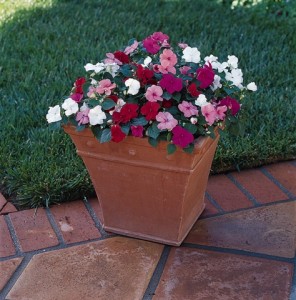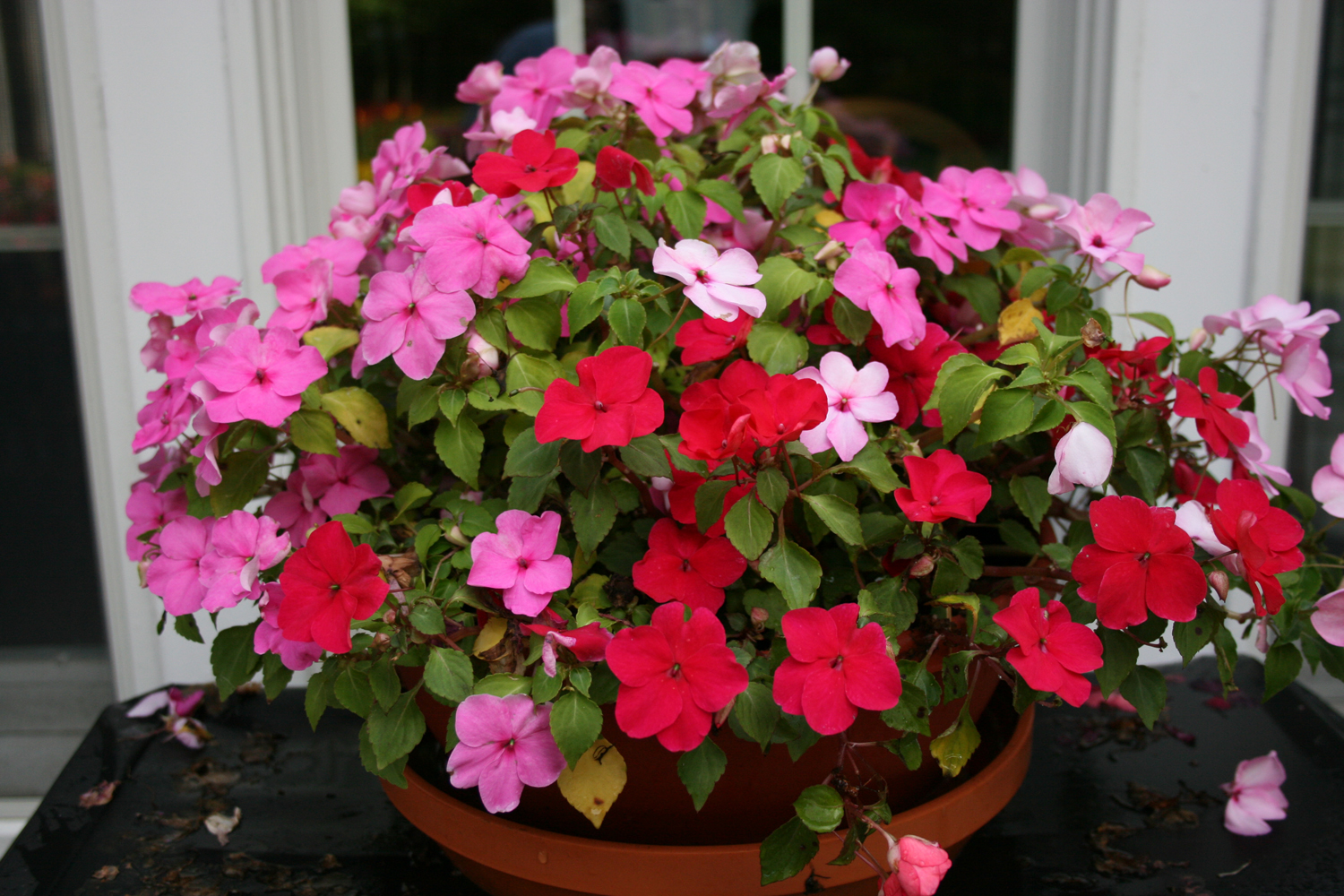
Tuberous Begonias
In towns like Redding, with spreading canopies shading the garden, impatiens are a garden lovers best friend. Part sun or full shade didn’t matter to the impatiens — with its brilliant colors brightening the dark corners of the garden it defied the rules of photosynthesis.
Mounds of red, pink, salmon, orange and even purple spilling out of a container or spreading across the garden floor. Appearing fragile, yet ranking among the toughest plants in the garden. If the impatiens were allowed to dry out and wilt in the summer heat, a quick sprinkle from the garden hose and they rose like Lazarus from the dead.

SunPatiens
But even the Lazarus-like impatiens could not escape the dreaded Downy Mildew. While this fungus disease has been reeking havoc on impatiens for years in Europe, it was not until the summer of 2012 that it came to Connecticut. Everywhere we looked last summer something was not right with our trusty Elfin’ mounds. The season started as usual, but by July it was clear something was wrong. Instead of massive mounds we had stunted growth. By August, they were all turning to mush.
All summer I traveled from one garden to the next explaining the reason for the sudden death, Impatiens Blight. And like the Tomato Blight or many other fungus disease, we figured it was a one year outbreak caused by too much rain in the spring. Little did we know this blight was terminal.
Impatiens were Redding Nursery’s largest selling annual. We devoted most of our greenhouse space to this one plant and sold them by the car loads to grateful shade-plagued gardeners. But this year we ordered no impatiens for the first time in the history of Redding Nursery.

Coleus

Inpatiens
“Surely something can be done?” I hear you ask. But no, Downy Mildew has been a problem for years in Europe. They have tried every remedy: fungicides, cultural practices, resistant breeding — nothing has helped and for years impatiens have not been planted across the pond. Now, the problem is here.

Begonias
This spring, some of the less reputable garden centers (large box stores come to mind) will probably have flats of impatiens for sale. But don’t waste your money. Your garden will be mush by summer. I attended a lecture on the plight of the impatiens recently. The room was filled with the owners from many of Connecticut’s reputable garden centers. When asked for a show of hands, not one was planning to sell the beloved impatiens this year.

Coleus
So what is to be done? It is hard to say goodbye to old friends. But in life, change is inevitable, and can sometimes lead to new inspiration. That shady spot in your garden can be filled with beautiful coleus with bright red variegated leaves or dark burgundy tones. Begonias are a great option, as tough as impatiens, deer resistant, and good in both sun and shade. New Guinea Impatiens are so far resistant to the disease and still a viable option for the garden or container. We will also be carrying a new plant, Sunpatiens, this year.

SunPatiens
So shed a tear for our old friend impatiens. But have some fun experimenting as you look to fill that shady void in your garden.
For answers to gardening questions, contact me via email: sean@reddingnursery.com
© 2013 Redding Nursery,all rights reserved.


Recent Comments